Head to Head: Samsung Galaxy Tab S vs. Apple iPad Air
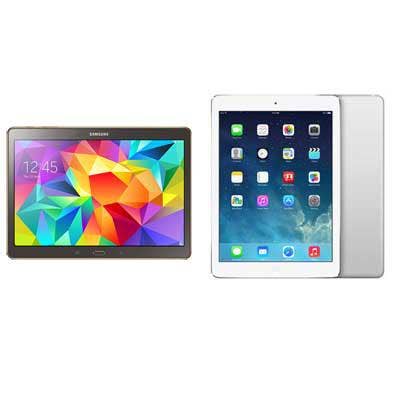
Samsung's New Flagship
At a launch event yesterday at New York City's storied Madison Square Garden, Samsung unveiled what it repeatedly referred to as its new flagship, the Galaxy Tab S. This light and paper-thin tablet is available in two sizes and is the first device of this size to employ Samsung's Super AMOLED panel, which it says is brighter and displays more colors more vibrantly than any of its competitors. While it didn't mention archrival Apple by name, it seems clear that Samsung is taking aim squarely at Cupertino's latest, the super-thin and light iPad Air. Is this a valid comparison? The CRN Test Center breaks it all down in this head-to-head comparison: Samsung Galaxy Tab S vs. Apple iPad Air.
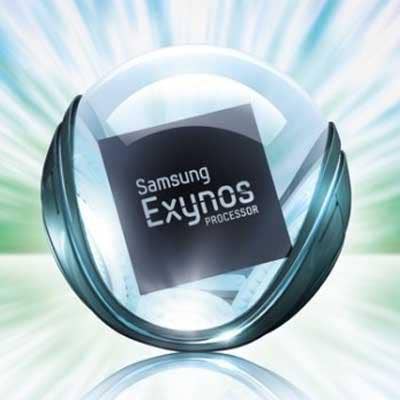
The App Processor
Samsung's latest tablets, like the Galaxy Note Pro 12, pack Samsung's Exynos 5 Octa 5420 SoC. This eight-core powerhouse has four ARM A15 Cortex processors running in at 1.9 GHz and four A7 cores at 1.3 GHz. The iPad Air contains Apple's A7 custom SoC, which incorporates two 64-bit ARMv8 application cores running at 1.3 GHz plus Apple's M7 processor to handle data coming from the device's accelerometer, gyro and compass.
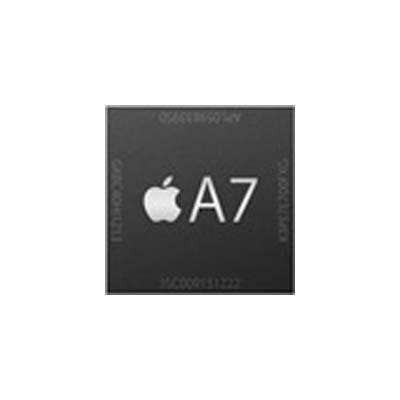
Graphics and Memory
The Exynos 5's GPU also is ARM-based. In this case it's the Mali-T628 MP6, which Samsung says this GPU more than doubles the 3D graphics capabilities of its predecessor. The A7 includes the dual-core PowerVR G6430 four-cluster GPU by Imagination Technologies. Both Samsung devices pack 3 GB of LPDDR3 RAM and either 16 or 32 GB of storage plus a microSD card slot that can add as much as 128 GB more. The iPad Air is built with 1 GB of RAM and comes with 16, 32 64 or 128 GB for storage.
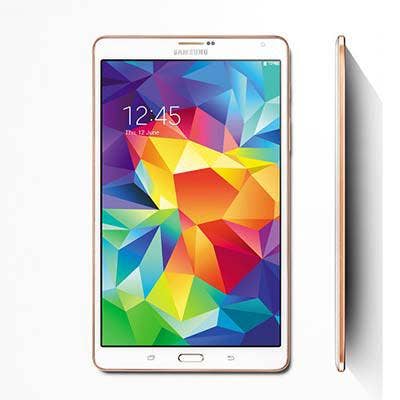
The Display
The Galaxy Tab S comes in 8.4-inch and 10.5-inch form factors, but both crank out an impressive 2,560 x 1600 pixels. For pixel density, this calculates to 287 pixels-per-inch for the larger unit and an eye-popping 360 ppi for the smaller. Perhaps more significantly, these are the largest panels Samsung has made using active-matrix organic LED (AMOLED), which reduces the filtering layers used in most other panels. Samsung says this allows more backlight to penetrate for 100x better contrast, improved outdoor viewing, more vivid colors and truer blacks. Apple's flagship tablet faces the world with a 9.7-inch IPS panel that puts out 2,048 x 1,536 and 264 ppi.
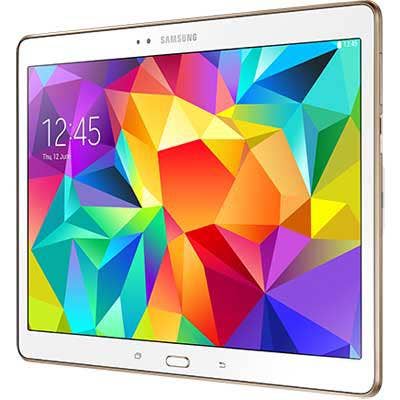
Weights and Measures
The 10.5-inch Galaxy Tab S measures 9.7 inches long by 7 inches wide. With its 9.7-inch display, the iPad Air is just three-tenths of an inch shorter at 9.4 inches in length and less than a half-inch narrower at 6.6 inches wide. Just three hundredths of an inch separate the two in terms of thickness; Galaxy Tab S is 0.26 of an inch thick versus iPad Air's 0.29. Both devices weigh in at 1.03 lbs (469g) with Wi-Fi. Adding a cellular radio moves iPad's needle to 1.05 lbs. Samsung didn't publish a corresponding figure. The 8.4-inch Galaxy Tab S measures 8.4 inches long, 4.9 inches wide and the same 0.26 of an inch thick. It weighs 0.65 of a pound (294g).
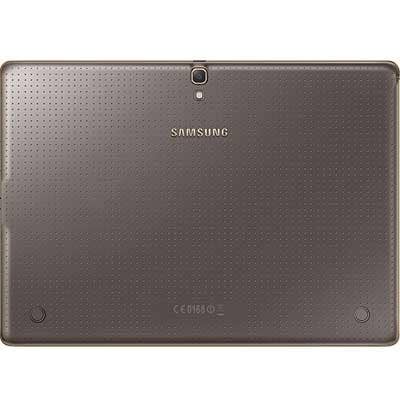
Cams and Comms
Samsung has a slight edge with its of cameras, and widens the gap when factoring in its communications. Both Galaxy Tab S models include an 8MP main camera, a 2.1MP face camera and can capture 1920 x 1080 video and playback 30 fps. Apple puts a 5MP main camera with 2.4f aperture and five-element autofocus lens is in the rear that also can capture 1080p video. iPad Air's face camera is a fixed-focus 1.2MP unit with 720p video capture capability. Samsung and Apple devices offer dual-band, dual-antenna Wi-Fi a/b/g/n MIMO and Bluetooth 4.0. Samsung's latest Tabs also support the three-stream 802.11 ac spec and Samsung Boost, which bonds Wi-Fi with 3G/4G for faster downloads. Neither Apple nor Samsung offer NFC here.
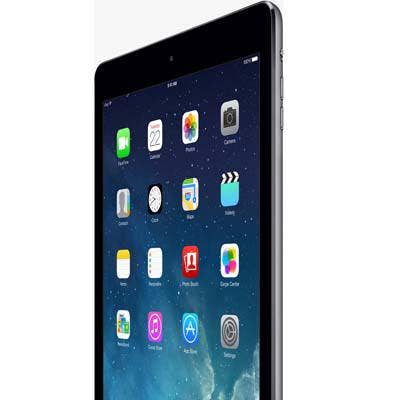
Sensors and Software
Both devices offer the usual array of sensors, including three-axis gyros, accelerometers, ambient light sensors and GPS and GLONASS geolocation receivers. To those, Samsung adds an infrared emitter for remotely controlling nearby electronic devices. Both Galaxy Tab S models will ship with Android 4.4 Kit Kat and Samsung's TouchWiz UI multi-tasking UI and Knox security software on top. Samsung also offers SideSync 3.0, which brings up the screen of a nearby Samsung phone for answering calls, transfering files or performing other tasks remotely. iPad Air includes the 64-bit iOS 7 and its fine tools for content sharing, printing, notifications, cloud storage, remote control, Siri, FaceTime, iPhoto, GarageBand, an ebook reader and more.
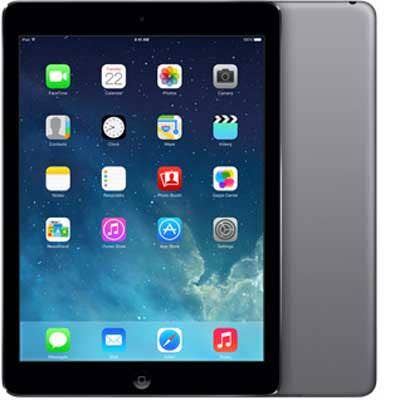
Ins and Outs
As on all of its tablets, Galaxy Tab S provides a microUSB port for charging and for file I/O with root-level access to Android's file system. File transfer works with Windows machines out of the box and on Macs after downloading the Android File transfer utility. As with all iOS devices, users are prohibited from accessing the file system directly, but must do so by synchronizing data through apps such as iTunes. These operations happen through Apple's Lightning Port, which uses a sturdy, reversible connector to handle charging and connection of monitors, docks and other peripherals. Both devices come with a 3.5mm headphone jack, microphone and buttons for power, volume and Home. The Galaxy Tab S adds soft keys for bringing up recent apps and going back.
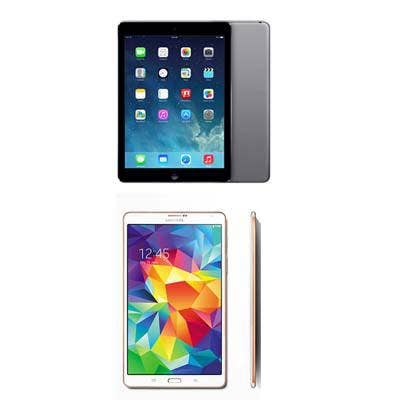
The Bottom Line
Samsung has priced its new flagship aggressively and will begin shipping Wi-Fi only units later this month and cellular units in July. The 10.5-inch Galaxy Tab S will sell for $499 with 16 GB of storage and Wi-Fi. The 8.4-inch unit will sell for $399 configured the same way. Samsung has not yet published prices on cellular units nor named its carriers. Pricing for a 16 GB light iPad Air starts at $499 with Wi-Fi only or $629 with cellular too.